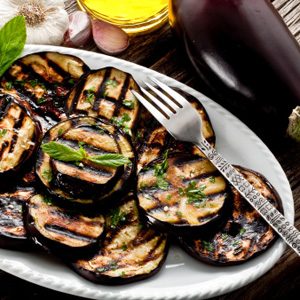
Broiling
What is it? Browning the tops of vegetables with intense dry heat while cooking the inside through.
Helpful Hints: Food is generally placed 4 to 6 inches from the broiler element for complete cooking; pre-cooked foods may be placed closer to the heat for quick browning. Tomatoes, eggplant, zucchini, peppers, mushrooms, and onions are often broiled. Most vegetables need to be marinated or brushed with oil before broiling. Fibrous vegetables such as leeks, fennel, and celery should be blanched before broiling. The broiler should always be preheated before using.
(Photo: Thinkstock)
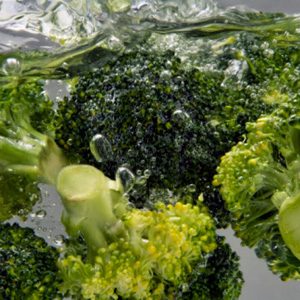
Blanching
What is it? Cooking vegetables in a large amount of boiling water for a brief period of time.
Helpul hints: The food can then be immersed in cold water to stop the cooking process. Tomatoes are often blanched for a minute or two to help remove their skins. Other vegetables may be blanched to enhance their colour and remove their raw flavour before being used as crudités on an appetizer relish platter or in a salad.
(Photo: Thinkstock)
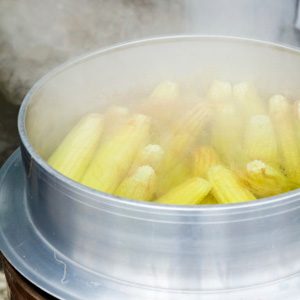
Boiling
What is it? Cooking vegetables in a pot of rapidly bubbling water.
Helpful Hints: Boiling is a suitable method for hard vegetables such as green beans, broccoli spears, and carrots. The secret is to cook the vegetable just long enough to brighten its colour and soften its texture but not so long that it becomes dull or mushy. Bring the water to a boil first, then add the vegetable and cook it uncovered or partially covered.
(Photo: Thinkstock)
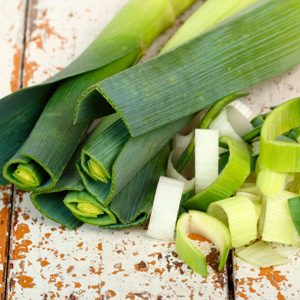
Braising
What is it? Sautéing vegetables briefly in fat before adding liquid to finish the cooking.
Helpful Hints: Braising works well with fibrous vegetables such as celery hearts, leeks, and fennel. Root vegetables and leafy greens also lend themselves to braising.
(Photo: Thinkstock)
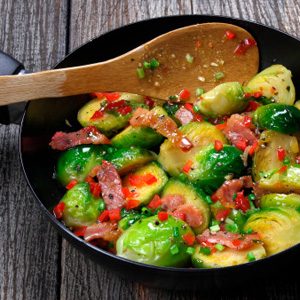
Frying
What is it? Cooking vegetables in very hot fat.
Helpful Hints: Pan-frying uses up to an inch of fat in a pan to cook larger pieces of food such as crumb-coated slices of eggplant. Deep-fat frying, where food is completely immersed in hot fat, is necessary for batter-coated vegetables, such as those cooked in Japanese tempura style. Sautéing and stir-frying are forms of frying that use a minimal amount of fat to cook small pieces of food for a short period of time.
(Photo: Thinkstock)
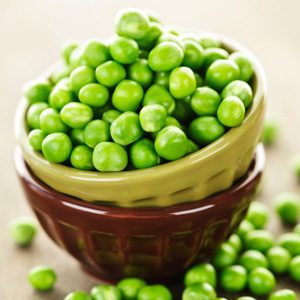
Microwaving
What is it? Microwaving is a fast and convenient way to cook many vegetables and keep their nutrients, crispness, and colour intact.
Helpful hints: Place vegetables in a microwave-safe dish with a vented cover and add a small amount of water. The greater the volume of vegetables, the longer it will take to cook them.
(Photo: Thinkstock)
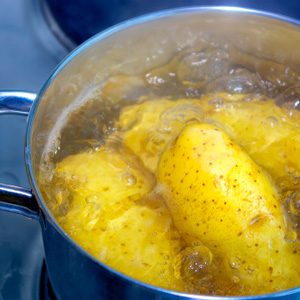
Parboiling
What is it? Partially cooking vegetables that require further preparation, by boiling for a brief period of time.
Helpful hints: Dense vegetables such as carrots and potatoes might be parboiled before they are sautéed with other vegetables so that all of the vegetables are done at the same time.
(Photo: Thinkstock)
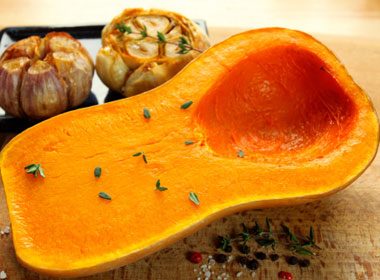
Roasting
What is it: Cooking vegetables slowly in an oven with dry heat.
Helpful hints: When vegetables are roasted, they are usually tossed first in oil or melted butter. High-temperature roasting (400°F to 450°F) results in well-browned food.
(Photo: Thinkstock)
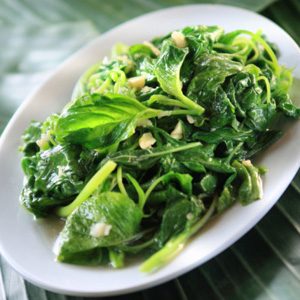
Sautéing
What is it? Cooking vegetables quickly in a small amount of fat over relatively high heat.
Helpful hints: Chefs constantly shake sauté pans during cooking to keep the food from sticking. Naturally tender vegetables, such as onions, peppers, mushrooms, and zucchini, can be cut up and sautéed very quickly. Hard vegetables such as carrots, broccoli, and cauliflower, may benefit from a blanching to soften them slightly before sautéing.
(Photo: Thinkstock)
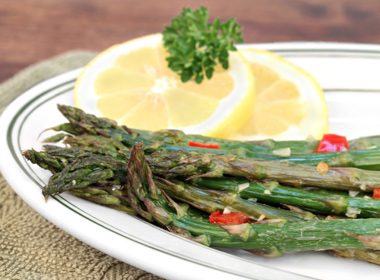
Steaming
What is it? Cooking food on a rack above, not in, boiling or simmering liquid, usually water.
Helpful hints: Cooking vegetables in the oven en papillote, or encased in parchment paper or foil packets with a bit of liquid, is also a form of steaming.
(Photo: Thinkstock)
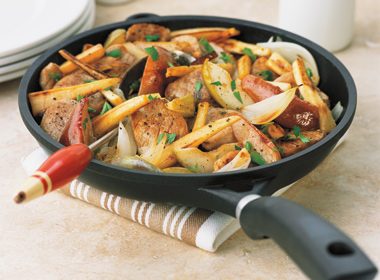
Stir-frying
What is it? Cooking small pieces of food quickly in a wok or skillet in a small amount of oil over high heat, stirring constantly.
Helpful hints: Most vegetables are stir-fried just until tender-crisp. Organized preparation is essential for successful stir-frying. All chopping and slicing of meat and vegetables must be done ahead of time. Seasoning ingredients must be measured out and mixed, where necessary, before heating the wok.
(Photo: Thinkstock)